By late fall much of the woodland garden has gone to sleep until spring. Many ferns show only brown, lifeless remnants of their former seasonal glory, making the few evergreen fern species even more valuable this time of year. Let’s consider Japanese holly fern (
Cyrtomium falcatum ‘Rochfordianum’)
, as its seasonal interest is especially appropriate during the holiday season.
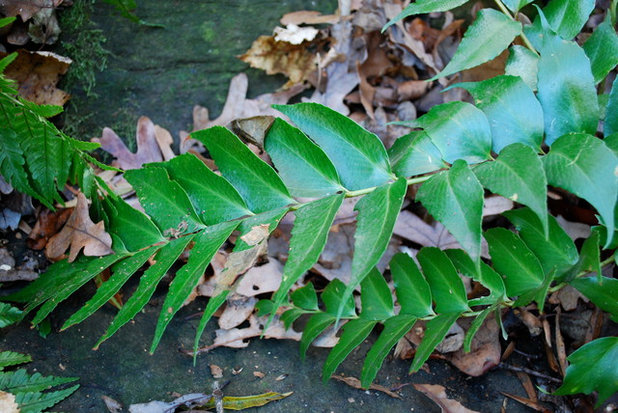
Jay Sifford Garden Design
Botanical name: Cyrtomium falcatum ‘Rochfordianum’
Common names: Japanese holly fern, Rochford’s holly fern
Origin: Central and eastern Asia
Where will it grow: Hardy to -10 degrees Fahrenheit (USDA zones 6 to 10; find your zone)
Water requirement: Consistently moist soil is best for optimal growth
Light requirement: Partial sun to full shade
Mature size: 2 feet tall and 3 feet wide
Benefits and tolerances: This fern is better behaved than some of its aggressive cousins; it is deer and rabbit resistant, grows well in full shade and is tolerant of wet soil.
Seasonal interest: New foliage that’s light green appears in midspring, maturing to a dark, glossy green that holds year-round; it can be cut back in very early spring if winter isn’t kind to it.
When to plant: Spring or fall is best in most areas; it can be planted during winter in the U.S. South.
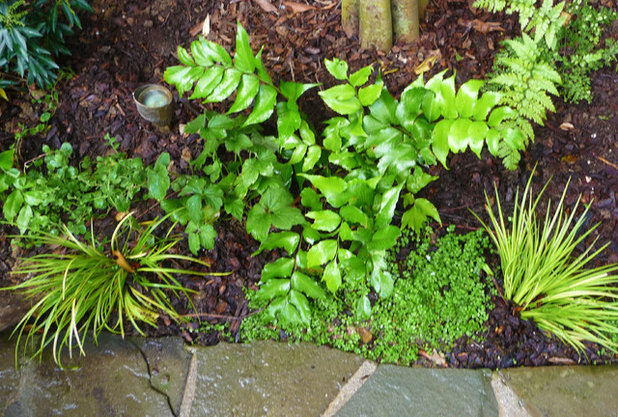
Urban Oasis
Distinguishing traits. Japanese holly fern is unique in that it sports shiny holly-like leaves that have serrated edges. It is vase-shaped to outward growing.
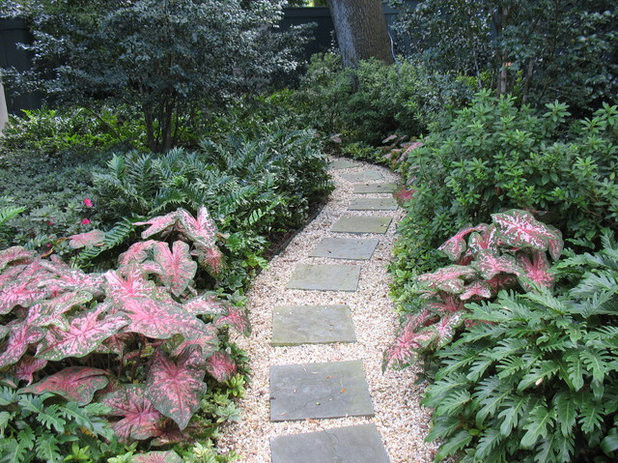
Peter Raarup Landscape Design
How to use it. Japanese holly fern, like most ferns, shows to best advantage when planted en masse, as seen to the left of this path. Groups of 12 or more are most effective if space permits. To emphasize diversity of texture in a woodland garden, consider planting another evergreen fern, such as autumn fern (
Dryopteris erythrosora), opposite massed holly fern.
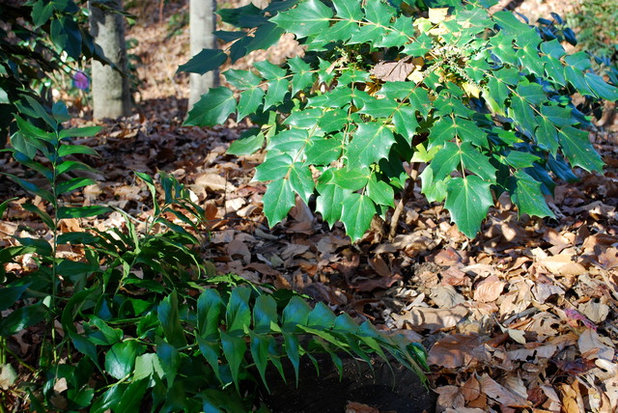
Jay Sifford Garden Design
To emphasize juxtaposition, consider planting it near leatherleaf grape holly
(
Mahonia japonica ‘Bealei’
, zones 5 to 8). Doing so reinforces the shape and texture of each plant, while the difference in size pulls the structural appearance of the Mahonia down and across the garden so that it looks like a large skirt.
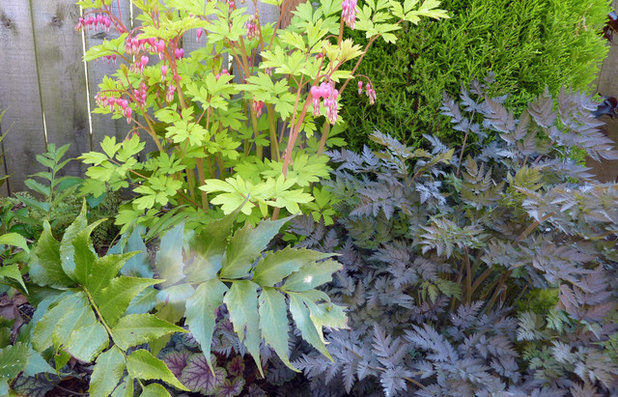
Consider pairing Japanese holly fern with more finely textured perennials that will contrast in color and form. Suitable companion plants include bleeding hearts (
Dicentra spectabilis,
zones 2 to 9), bugbane (
Cimicifuga simplex cvs, zones 3 to 9) and false spirea
(
Astilbe cvs, zones 3 to 8). Dwarf conifers are also candidates to offer contrasting texture and form.
Shown: Cyrtomium falcatum ‘Rochfordianum’,
heuchera,
Dicentra spectabilis ‘Gold Heart’,
Anthriscus sylvestris ‘Raven’s Wing’ and
Cupressus macrocarpa ‘Wilma Goldcrest’
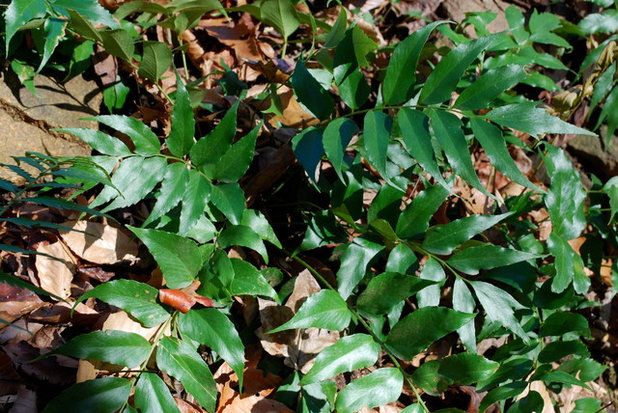
Jay Sifford Garden Design
Planting notes. Japanese holly fern performs best when planted in moisture-retaining soil amended with decayed organic matter, although established plants can tolerate some drying out due to the thick texture of the leaves. This fern will greatly benefit from the addition of mushroom compost or composted cow manure in the hole at the time of planting. If you’re planting in consistently wet soil, consider planting the fern slightly above ground level or at a slight angle to protect the crown from crown rot. Japanese holly fern can be divided after it matures and develops additional crowns.
More:Ferns: A Shade Gardener’s Best Friend
Browse more Houzz guides to gardening





